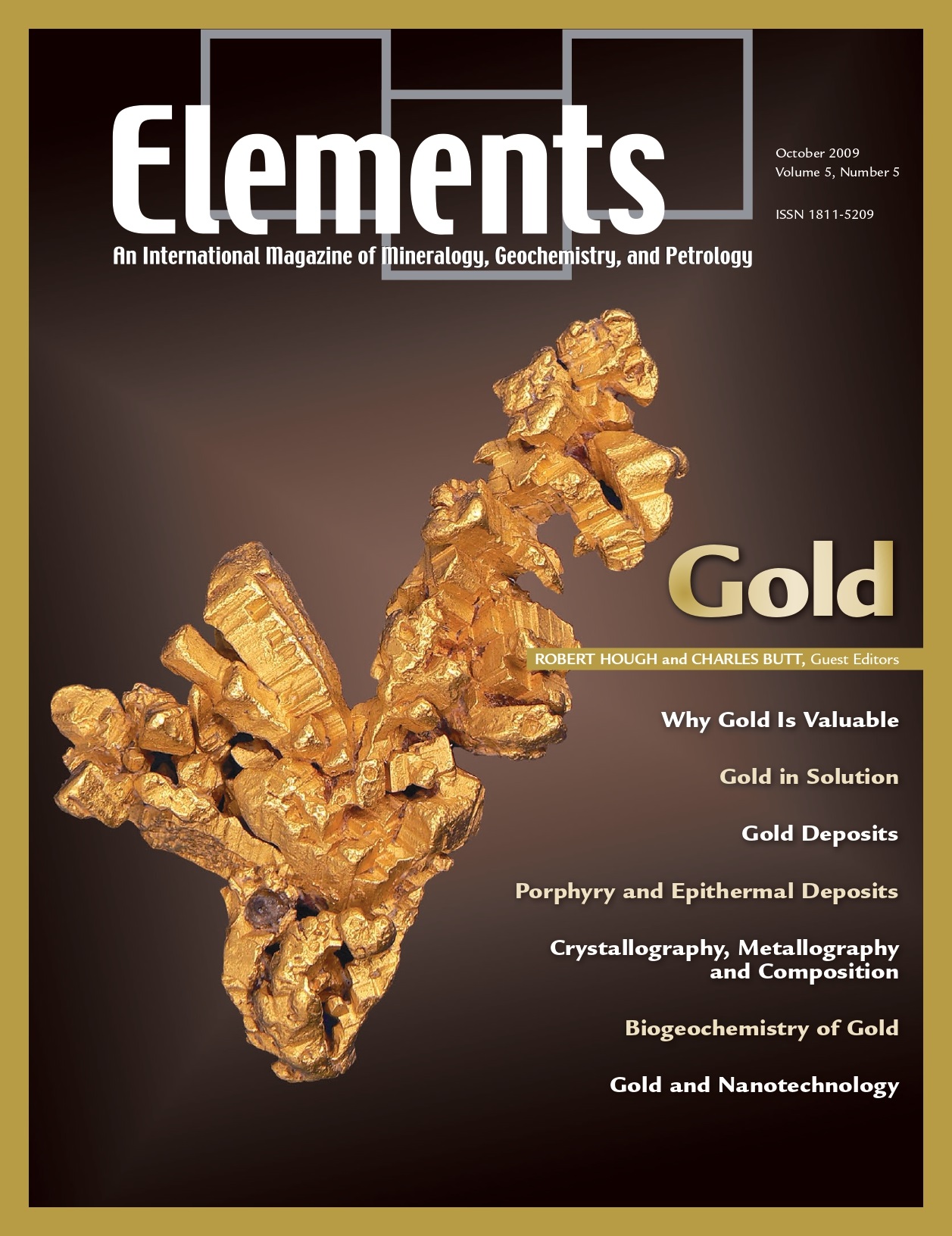Gold, October 2009, Vol. 5, No. 5
$20.00
Gold fascinates researchers in many sciences. As well as being attractive as a precious metal, gold has important physical and electrical properties that cause it to be an ’advanced material’ for manufacturing and drug delivery in medical science.
Gold
October 2009, Vol. 5, No. 5
Gold fascinates researchers in many sciences. As well as being attractive as a precious metal, gold has important physical and electrical properties that cause it to be an ’advanced material’ for manufacturing and drug delivery in medical science. Geologically, gold can be transported in solution in ambient as well as high-temperature fluids, and its mineralogy, composition and crystallography are often used to decipher and interpret the genesis of different gold-bearing ore systems. Because gold is a metal, its study requires a detailed understanding of metallography. Finally, nanocrystals of gold and its alloys display unique properties, and these products are finding widespread application in manufacturing and are also seen in the natural environment. This issue of Elements describes new observations about a metal that has fascinated humans since early times. Current research spans the fields of geochemistry, crystallography, and metallurgy, and includes novel studies in the materials sciences.
Why You’ll Love Elements Magazine:
- Expert Contributors: Articles written by renowned researchers in the field of geoscience.
- Engaging Content: Join a community of readers who are passionate about Elements.
- Exceptional Quality: Each issue is printed on high-quality paper with stunning visuals and detailed illustrations that bring complex scientific concepts to life.
Order your copy of the October 2009 issue of Elements magazine today and explore the world of gold.
Related products
-
Phosphates And Global Sustainability, April 2008, Vol. 4, No. 2
$20.00Phosphorus is a unique element: it is essential to the existence of all living forms, and as such controls biological productivity in many terrestrial and marine environments; but when in excess, it leads to uncontrollable biological growth and water-quality problems. This has become a common environmental issue, resulting from our careless use of phosphorus in agriculture, yet phosphate ore deposits, from which fertilizers are produced, are a finite natural resource.
-
Large Igneous Provinces: Origin And Environmental Consequences, December 2005, Vol. 1, No. 5
$20.00Large igneous provinces record major outpourings of igneous rocks, both on the continents and in ocean basins. Their origin is still vigorously disputed, with models invoking mantle plumes, thermal effects of the lithosphere, and meteorite impacts.
-
Medical Mineralogy And Geochemistry, December 2007, Vol. 3, No. 6
$20.00Medical mineralogy and geochemistry is an emergent, highly interdisciplinary field concerned with both normal and pathological interactions between minerals or amorphous inorganic solids and biomolecules or cells within the human body, and the transport and fate of prions and protein toxins in the soil environment. Prior research has, appropriately, focused on the complex genetic and molecular biological aspects, but there is a growing recognition of the vital need for understanding the surface and bulk properties and reactivities, especially at the challenging nanoscale characteristic of biomacromolecules and biominerals.






